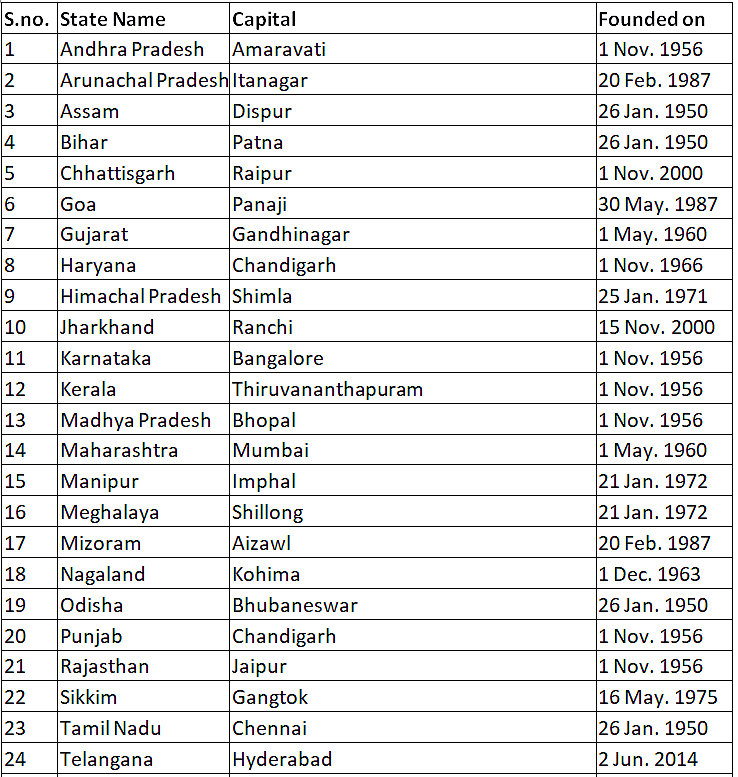States, Cities and Capitals | General Knowledge for Young Learners - Class 1 PDF Download
| Table of contents |

|
| States and Capitals |

|
| States and Capitals Map |

|
| What is a Union Territory? |

|
| Difference Between State and Union Territories |

|
| History of States and Capitals of India |

|
States and Capitals
States and Capitals: India is the 7th largest and the 2nd most populous country in the world. With a total of 28 states and 8 Union Territories, it forms a union of states in India. Each state of India has an administrative, legislative, and judicial capital some states all three functions are conducted in one capital. Every state is ruled by a Chief Minister. The Constitution of India was adopted on 26 November 1949 and came into force on 26 January 1950.
States and Capitals of India
India is a union of states and in the states, the Governor, as the representative of the President, is the head of the Executive. The system of state government closely resembles that of the Union. The boundaries of Indian states are reorganized on a linguistic basis by the States Reorganization Act, of 1956. Union Territories are administered by the President through an Administrator appointed by him/her. Each State/UT of India has its unique demography, history and culture, language, dress, festivals, etc.
Indian States and Capitals
Here is the list of the Indian States and capitals that every Indian must know:


States and Capitals Map
As of January 2023, there is a total of 28 states in India and 8 Union Territories. Union Territories are administered by the President through the administrators that are appointed. The Hon’ble President of India is the constitutional head of the Executive of the Union. Each state has its own chief minister formulating the policies required to run the state.
What is a State?
Each state of India has an administrative, legislative, and judicial capital some states all three functions are conducted in one capital. It is a territory that has its own Chief Minister. A state has its separate government. Functions of the state are handled by the State Government such as security, healthcare, governance, revenue generation, etc.
What is a Union Territory?
A Union Territory is an administrative division that is directly controlled by the Central Government. Union Territories are ruled directly by the Central Government and have a Lieutenant Governor as an administrator, who is the representative of the President of India and is appointed by the Central government.
Note: Delhi, Puducherry, and Jammu & Kashmir do not operate in the same manner as the other five Union Territories of India since they have partial statehood status and have their own elected legislative assemblies.
8 Union Territories of India
There are a total of 8 Union territories of India. Here is the list of Union Territories of India and their capitals:
Difference Between State and Union Territories

History of States and Capitals of India
India is a sovereign, secular, democratic, republican country with a parliamentary system of government. India gained its independence on 15th August 1947. It is a land of rich cultural heritage and natural beauty. The states and Capitals of India are the basis of its linguistic, cultural, and geographical demarcation. Every state and union territory in India has an administrative, legislative, and judicial capital of its own. After independence, it comprised 2 political units namely the British Provinces and the Princely States. The partition between India and Pakistan gave three options to the princely states:
- Joining India
- Joining Pakistan
- Remaining independent
Out of the 552 princely states situated within India, 549 joined India and the remaining 3 refused to join India. However, they also integrated later. The Constitution of India was adopted on 26 November 1949 and it was implemented on 26 January 1950. The boundaries of the states of India are reorganized on a linguistic basis by the States Reorganization Act, of 1956.
|
51 videos|98 docs|37 tests
|
|
51 videos|98 docs|37 tests
|

|
Explore Courses for Class 1 exam
|

|

















